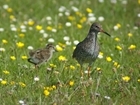Blogs
-

in:
GWCT News Blog
under:
Waders
According to the Curlew Recovery Partnership, around two thirds of all curlew pairs breeding in the English lowlands occupy agricultural grassland habitats affected by seasonal grass-cutting.
-

-

in:
GWCT News Blog
under:
Woodcock
, Waders
We are aware of Wild Justice's letter to the Secretary of State about woodcock shooting. The GWCT has undertaken more research into woodcock ecology and conservation than any other organisation in the UK and we will be writing to the Secretary of State with our views on this matter.
-

in:
GWCT News Blog
under:
Waders
The GWCT Wetlands department is studying the breeding ecology of redshank in the Avon Valley and are aiming to discover more about this fascinating bird’s breeding behaviour and ecology.
-

in:
GWCT News Blog
under:
Waders
Earlier this year, British Birds posted a letter by Leo Smith, making various claims not just about the impact of pheasant releasing on curlew, but also about the GWCT. This month, the journal published a response written by our Head of Research, Dr Andrew Hoodless, which we have summarised here.
-

-

in:
Auchnerran Blog
under:
GWCT Scotland
, Waders
GWCT is working hard to help these vulnerable species. At our research and demonstration farm, Auchnerran in Aberdeenshire, we are fortunate to have thriving populations of lapwing, oystercatcher and curlew
-

in:
GWCT News Blog
under:
GWCT Wales
, Waders
The plan, launching later this year, sets out how to avoid curlew becoming extinct as breeding bird in Wales by 2033 and the wider benefits to society, benefits for key species of conservation concern and benefits for climate change that flow from management for Curlew.
-

in:
Auchnerran Blog
under:
GWCT Scotland
, Waders
On 19th April we highlighted an increase in the number of lapwing clutches predated by badgers at Auchnerran, our Scottish demonstration farm. Now, almost a month later, we can provide an update. 3 minute read.
-

in:
GWCT News Blog
under:
Waders
Please help us work towards better advice and support mechanisms for curlew by sharing your experience through our survey.
Get the Latest News & Advice
Join over 100,000 subscribers and stay updated on our latest advice, research, news and offers.
*You may change your mind any time. For more information, see our Privacy Policy.